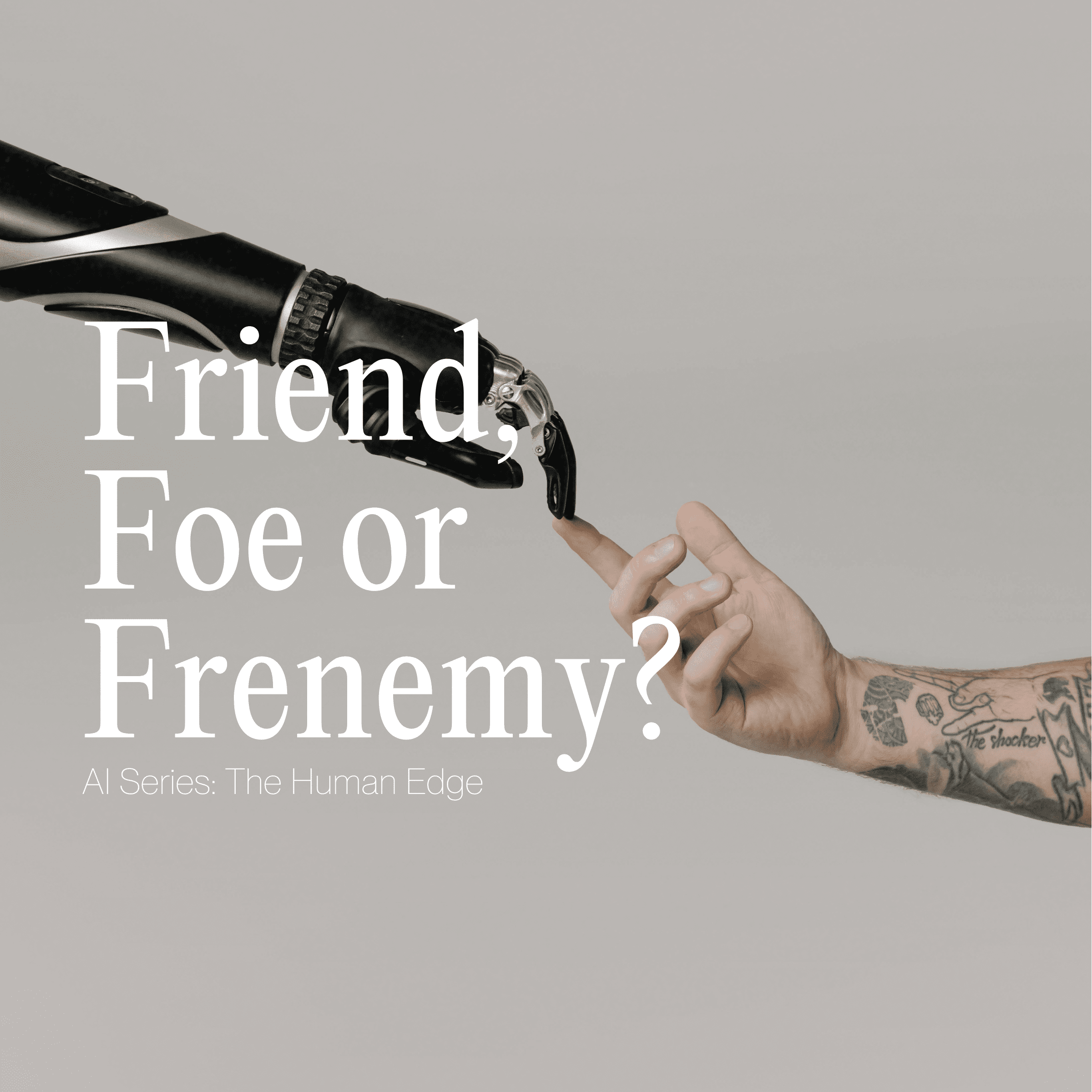Training AI to Amplify Human Creativity
AI can’t feel the thrill of an idea taking shape at 3 AM. It won’t shed tears at sunrise. It won’t have its heart broken and turn that pain into art.
These uniquely human experiences drive creativity that matters. AI, after all, exists to serve our interests—without human direction, it’s just code running in circles.
Time to strip away the myths about creativity in 2025.
Beyond the Panic Headlines
You’ve heard the doom: AI will steal creative jobs. The robots will replace us all. Game over. But the data tells a different story. Ad Age’s 2024 AI whitepaper shows 69% of marketers see AI creating job opportunities, not eliminating them. And the adoption is massive – 91% of marketers are already using AI in their jobs daily.
Think of AI as more of a supporting actor, not the star. Yes, 83% of marketing strategists use it for editing and 81% for content creation (Hootsuite Social Media Trends 2025), but AI isn’t crafting those unforgettable brand moments – humans are. AI helps scale, but humans create the cultural significance that defines a brand.
The Creative Partnership
The creative process is inherently human and AI should be invisible in the background facilitating rather than driving the creative process. Think of it like the early days of DSLR cameras – it democratized photography but didn’t replace photographers. It gave us new tools but didn’t eliminate the need for vision.Combined with social media’s distribution power, the photography industry saw huge demand and growth as the DSLR grew in popularity. AI will likely follow the same path–not killing artistry, but creating new ways to express and share it.
Take The Estée Lauder Companies recently unveiled their ‘Beauty Reimagined’ strategy. During their Q2 2025 earnings call, CEO Stéphane de la Faverie outlined a major shift towards integrating AI across product development, marketing, and supply chain management:
“We are ready to dramatically scale the integration of AI into our workflows from product development to marketing, supply chain, back office, and beyond to accelerate processes and improve decision-making. What’s most exciting, we expect AI to free up resources to unleash even greater creativity by our brand teams for the consumer.”
This perfectly captures AI’s evolving role—not AI replacing creativity, but AI giving brand teams more space for emotional storytelling.
Human creativity shines in making meaning from chaos. While AI excels at pattern recognition and data crunching, it can’t understand the raw emotion behind a brand story. It can’t feel the pulse of culture shifting beneath our feet. It can tell us what is happening, but it can’t make it all mean something.
The Creative Evolution
One brand effectively balancing AI’s power with human creativity is Virgin Voyages. The cruise line leveraged AI in their campaign featuring Jennifer Lopez, where they introduced JenAI, an AI-generated version of Lopez that personally invited consumers to book cruises. More importantly, Virgin Voyages uses AI throughout their marketing workflow, leveraging it to generate insights at the beginning of the creative process rather than as an afterthought. This allows for a more agile and responsive marketing strategy that maintains human authenticity while benefiting from AI’s efficiency.
The role of creatives isn’t disappearing—it’s transforming. While AI handles tedious work (47% use it for efficiency, according to Hootsuite), we focus on what makes us uniquely human:
- Spotting cultural shifts before they emerge
- Crafting stories that genuinely affect people
- Making those wild creative leaps
- Getting what makes people tick
Look at Coca-Cola’s “Create Real Magic” campaign. Sure, they used AI for the visuals, but critics noticed something was missing – the human touch that makes you feel something. It lacked warmth, and it felt manufactured rather than crafted. That’s because AI can create content, but it can’t create meaningful connection.As an example, look no further than OpenAI itself. Though arguably the most famous pioneer in the AI world, its first-ever Super Bowl ad was created with human ingenuity at the center. Though ChatGPT’s Sora was used for early rendering and prototyping, the final ad was the product of human artists. This was an intentional move by CMO Kate Rouch, who called the project “a celebration of human creativity and an extension of human creativity.”
AI is at its best when it’s propelling human ingenuity forward. Without humanity at its core, it is software, and audiences everywhere can recognize the difference.
The future belongs to creatives who can:
- Leverage AI’s analytical power while maintaining creative instincts
- Turn cold data into stories worth telling
- Navigate cultural subtleties AI cannot grasp
However, we must acknowledge a significant caution revealed by recent research published in Science Advances and highlighted in Forbes: AI may create a homogenization effect. The 2024 study found that “generative AI-enabled stories are more similar to each other than stories by humans alone,” suggesting that while AI might boost individual creativity (especially for those who struggle creatively), it risks reducing collective originality across the industry. This presents a strategic challenge for brands seeking true differentiation—the more everyone uses the same AI tools, the more similar their outputs become.
As we navigate this new landscape, remember: AI is another tool in your creative arsenal, not the source of creativity itself. Tools change, but creativity remains fundamentally human.
That’s something no algorithm will ever replicate.
Ready to tell your story with more heart and smarter tools?
At Goodstory, we help brands harness the best of AI and human creativity to make lasting impact.
Let’s create something unforgettable together. Let’s connect!
